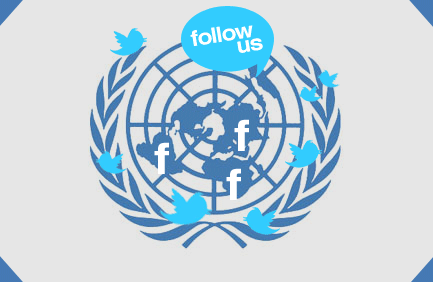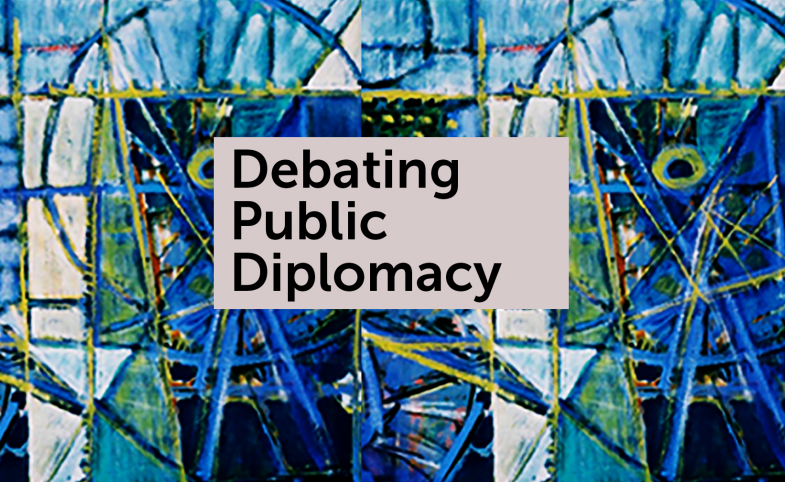 Several weeks ago I wrote a blog post in which I attempted to illustrate and analyze the social network of the world’s foreign ministries. This analysis was the result of a series of interviews I have been conducting with foreign policy practitioners at the Israeli foreign ministry who told me that they use social media accounts operated by foreign ministries as an important source of information. By following the Israeli foreign ministry’s twitter account, for instance, foreign governments can gain insight into Israel’s foreign policy goals, its recent actions in the global arena and its stance on relevant issues such as the negotiations with the Palestinians.
Several weeks ago I wrote a blog post in which I attempted to illustrate and analyze the social network of the world’s foreign ministries. This analysis was the result of a series of interviews I have been conducting with foreign policy practitioners at the Israeli foreign ministry who told me that they use social media accounts operated by foreign ministries as an important source of information. By following the Israeli foreign ministry’s twitter account, for instance, foreign governments can gain insight into Israel’s foreign policy goals, its recent actions in the global arena and its stance on relevant issues such as the negotiations with the Palestinians.
While many people took time to comment on my blog post, one comment was truly enlightening. One of the readers wrote that it may be interesting to analyze the social network of embassies to the United Nations headquarters in New York. Given the fact that the U.N. is a major diplomatic hub, and seeing as how all the world’s nations have representatives to the U.N., it is quite possible that embassies to the U.N also follow one another’s social media accounts and regard them as important sources of information.
Embassies to the U.N. may use social media In order to gain insight into other nations’ foreign policy initiatives, how they intended to vote on various U.N. resolutions and in U.N. committees, joint collaborations by several nations on U.N. resolutions and even who is a contender for the U.N.’s Holy Grail, the empty seats on the U.N. Security Council.
In order to analyze the United Nation’s social network, I compiled a sample of the twitter accounts of 56 embassies to the U.N. . Using the Visone program, I mapped this social network as can be seen in the illustration below. Note that most dense area of the network includes the most popular embassies in this network as well as those embassies that are the most avid followers of their peers at the United Nations.
I used three parameters to analyze this network and they are in-degree, out-degree and betweenness.
The in-degree parameter measures each embassy’s popularity in the network. The most popular embassy to the U.N. is the United States which is followed by 43 other embassies. The second most popular embassy is Germany’s embassy to the U.N. which is followed by 42 other embassies. The United Kingdom comes in at third place followed by France, the European Union, Sweden, Rwanda, Norway, New Zealand/Guatemala (tie) and Spain.
The out-degree parameter, which indicates the amount of other embassies with whom one embassy has contact, is of paramount importance. The higher an Embassy’s out-degree score the greater its ability to gather and disseminate information in the U.N’s social network. The country with the highest out-degree score is New Zealand followed by Spain, Cyprus, Palestine, the United States, the Netherlands, the European Union, Poland, Germany/Switzerland (tie) and Lithuania.
The final parameter measured was betweenness which reveals which embassies serve as important hubs of information as they link together embassies that do not follow each other directly. The embassy with highest betweenness score was the United States, followed by New Zealand, the European Union, the Netherlands, Germany, the United Kingdom, Spain, Cyprus, Palestine and Norway.
The embassies that received high scores on all three parameters were the United States mission to the U.N., The European Union, Germany, New Zealand and Spain. Theses embassies can be seen as the elite members of the U.N.’s social network.
It is interesting to note that these results differ from the ones found in the analysis of the social network of the world’s foreign ministries. Israel and Russia who were at the core of the foreign ministries social network, can be found at the periphery of the U.N.’s social Network. Poland and Sweden, on the other hand, are found the core of both networks- a true fete in the age of digital diplomacy.
Another important finding is the relative centrality of the State of Palestine in the U.N.’s social network. The Palestinian mission to the U.N. received high scores on two important parameters: out-degree and betweenness meaning that they have the ability to disseminate information quickly throughout the network while serving as an important hub of information.
Finally, I have often wondered if foreign ministries view their decision to “follow” another country’s social media accounts as a political statement. The fact that the Israeli and Palestinian embassies to the U.N. do not follow each other might indicate that this is indeed the case. When viewing the U.N.’s social network, it seems that Israel and Palestine are on opposite sides of the world.
div { margin-top: 1em; } #google_ads_div_wpcom_below_post_adsafe_ad_container { display: block !important; }
]]>














